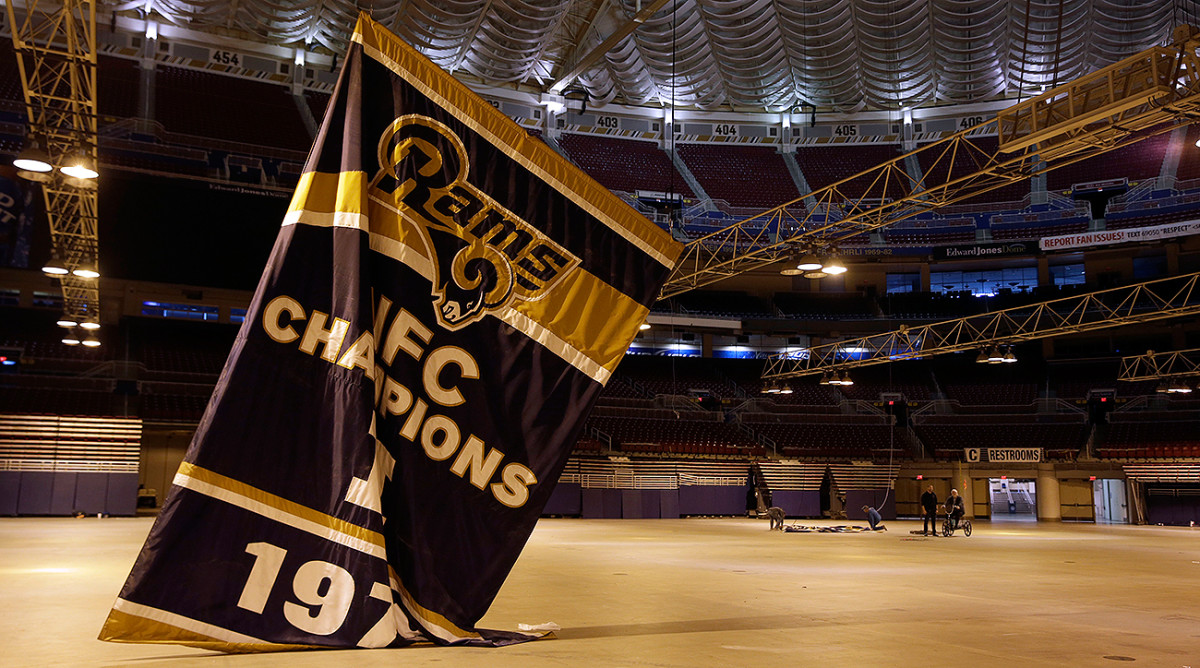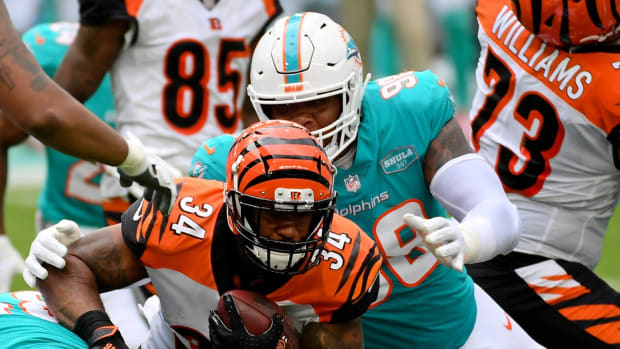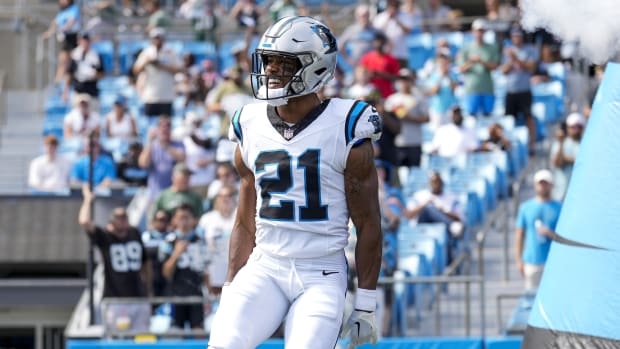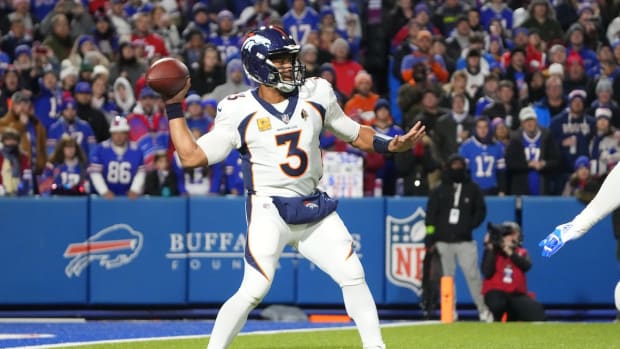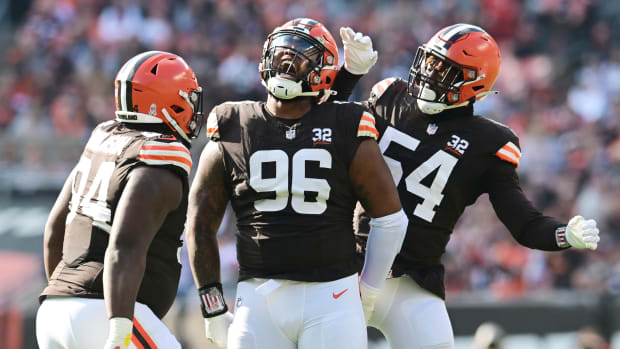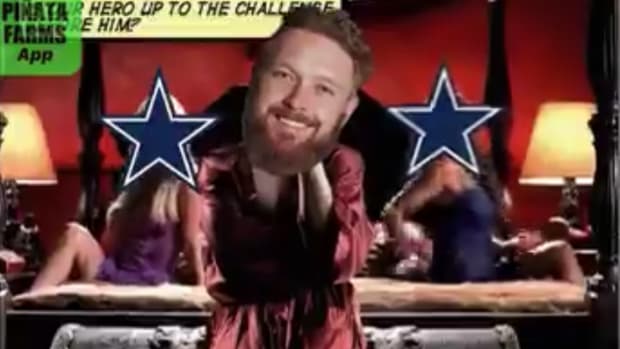St. Louis sues the NFL: Where the Rams' relocation could go next in court
The relocation of the Rams from St. Louis to Los Angeles has left many fans in St. Louis angered and disillusioned. Some of them are convinced that the team’s owner, Stan Kroenke, and NFL commissioner Roger Goodell dishonestly conspired to sell out the Gateway City for the riches and glamour of Los Angeles. This anger has sparked the City of St. Louis and the St. Louis Regional Convention and Sports Complex Authority (RSA) to sue the NFL and all of its teams. The lawsuit, which was filed in St. Louis Circuit Court on Wednesday, alleges that the NFL and its teams breached their own contractual commitments in how they assessed relocation plans. In doing so, the plaintiffs insist, the NFL defrauded the city and the RSA of over $100 million.
To be clear, the plaintiffs, who are represented by attorneys Robert Blitz and James Bennett, do not demand the return of the Rams to St. Louis. As has been shown in other franchise relocations, once a team leaves, it’s gone.
Instead, the city and RSA request that the court award them disgorgement of NFL profits that have been generated by the relocation and impose unspecified punitive damages as well. In other words, St. Louis wants the many millions of dollars that the NFL has gained from relocating the Rams to L.A., plus other money to reflect a stiff punishment for team and league officials allegedly behaving as frauds.
Aaron Hernandez found not guilty of Boston double murder: Breaking down jury's decision
To understand the Rams’ lawsuit, consider the Raiders
Franchise relocation is a divisive topic in any pro sports league, but particularly so in the NFL. This stems mainly from the relatively frequent relocation of the Raiders and the legal fallout of those moves. The league and Al Davis, the principal owner of the Raiders from 1972 until his death in 2011, battled in court during the 1980s and 90s over his desire to move the team from Oakland to Los Angeles and then back to Oakland. Each time, a more lucrative stadium opportunity motivated Davis to leave.
The business problem for Davis was that the NFL and most of the league’s owners objected to his plans. The Rams, which played in Los Angeles from 1946 to 1994, were a main reason why: the league was concerned about having two teams in the same market. The league also believed that franchise relocation poses the risk of undermining the relationship between the NFL and its fans as well as the relationship between the league and its broadcast partners. Obviously, franchise relocation betrays one set of fans to benefit another.
The legal problem for Davis was that under Article 4.3 of the NFL’s constitution and bylaws, at least three-quarters of other teams’ principal owners must approve a team’s relocation. Davis, like every NFL owner, contractually assented to follow the constitution and bylaws, which are documents that govern the relationship between teams, owners and the league.
Marshawn Lynch's Oakland homecoming may not meet the hype, but he'd still help the Raiders
Davis and the NFL sued each other and invoked different areas of law, most notably antitrust law. Davis’s theory was that the relocation policy interfered with the most competitive outcome for his franchise: that Raiders play in their preferred stadium and city. By joining hands to block that outcome, Davis insisted, the NFL and other teams engaged in anti-competitive conduct to the detriment of him and the Raiders.
The league rebutted this claim by asserting that Davis, like every owner, contractually agreed to the league having final say over whether a team can leave or be bought by a particular buyer. The underlying logic for the league having such authority is that although NFL teams are individually owned businesses, they exist to advance the joint venture of a professional football league where competing teams frequently collaborate and evenly share many types of revenue. From that lens, each team is expected to operate in the best interests of the league, even when doing so might disadvantage any given team. Put more bluntly from the NFL’s vantage point, while Davis owned the Raiders, the Raiders weren’t really “his”.
Although the litigation took many turns, the net result was that Davis got what he wanted: he relocated his team twice, first from Oakland to Los Angeles in 1982 and a second time from Los Angeles back to Oakland in ’95 (the Raiders, of course, are on the move once again, this time to Las Vegas).
During the course of the litigation in 1984, the U.S. Court of Appeals for the Ninth Circuit criticized the NFL for failing to employ measurable criteria when determining whether a team’s petition to relocate is desirable or undesirable. The court feared that the league might have rejected Davis’s relocations plans not on the merits but rather due to personal animosity for Davis, whom some in the league derided as a “maverick”. As a suggested remedy, the court recommended that the NFL become more transparent about its relocation process and utilize “objective factors” when presented with a relocation petition. Those factors, the court reasoned, might include population comparisons between where a team currently plays and where it would play, comparative economic projections of the current and proposed cities, and current and expected fan loyalty.
The NFL took the Ninth Circuit’s advice and formally adopted a relocation policy. The policy establishes guidelines for the league’s evaluation of proposed franchise relocations. The policy makes clear that the NFL “favors stable team-community relations” and obligates teams “to work diligently and in good faith to obtain and to maintain suitable stadium facilities in their home territories.” As part of a directive that teams make every effort to not relocate, teams must “operate in a manner that maximizes fan support in their current home.”
The policy also lists numerous requirements for how the NFL should evaluate and respond to relocation proposals. To illustrate, here are two requirements:
— Interested parties—including community members from where a team currently plays—must have an opportunity to provide oral and/or written comments regarding the proposed transfer, including at a public hearing conducted by the league in the community from which the team seeks to relocate.
— The NFL will publish, within 30 days of any relocation decision, a written statement in newspapers of general circulation within the incumbent community setting forth the basis of its decision in light of NFL rules and procedures for evaluating franchise relocation.
As explained below, St. Louis insists the NFL failed to follow parts of the relocation policy in the consideration and implementation of the Rams’ relocation to Los Angeles.
The city argues the NFL didn’t follow its own rules
The Rams played in St. Louis from 1995 to 2015, an era during which various parties—including Rams officials, NFL officials, and St. Louis politicians and business leaders—argued over the quality of the Edward Jones Dome (now named the Dome at America’s Center) as the team’s home stadium.
Grossly summarizing the history: In 1995 the Rams signed a 30-year lease agreement that dictated that the dome would eventually need to be in the top 25% of NFL stadiums, or else the Rams could convert the long-term lease into a year-to-year lease. Although significant improvements were made to the stadium during the 2000s, an arbitration panel in 2013 concluded that it had failed to meet the top 25% threshold. Subsequent efforts to persuade St. Louis and Missouri taxpayers to fund additional improvements also failed. Consequently, the stadium was not in compliance with the lease, thereby allowing the Rams to convert the lease into a year-to-year agreement and pursue other stadium options.
Meanwhile, in Jan. 2014, Kroenke—a real estate developer with properties in the U.S. and overseas—bought a 60-acre lot in Inglewood, Calif. Although his intentions for the property were unknown, speculation quickly rose that Kroenke planned on moving the Rams to Los Angeles, the second largest media market in the U.S. and one that, at the time, lacked an NFL team. In Jan. 2015 the Rams converted its lease with the dome to a year-to-year lease, a clear sign that the team was contemplating a move. Such a plan became a reality in Jan. 2016, when the team announced its intention to relocate to LA and build a stadium on Kroenke’s property. The NFL evaluated and approved Kroenke’s move to Los Angeles, with the team playing in L.A. Memorial Coliseum—where the Raiders once played—until the new stadium, named the Los Angeles Stadium at Hollywood Park, is ready in 2019.
What's next for the Giants and Eli Manning amidst memorabilia scandal?
In its lawsuit, the city and the RSA claim that Kroenke and other Rams officials were dishonest about their intentions and that the NFL did not satisfy obligations articulated in the relocation policy. For instance, in 2010, Kroenke told fans, “I’m going to attempt to do everything that I can to keep the Rams in St. Louis.” Four years later, Kevin Demoff, the Rams Chief Operating Officer, is quoted by the plaintiffs as denying that the L.A. property was intended for a football team: “[It’s] not a piece of land that’s any good for a football stadium. The size and the shape aren’t good for a football stadium.” The plaintiffs also quote Goodell, who said of the L.A. land purchase, “I think instead of overreacting we should make sure we do what’s necessary to continue to support the team locally as the fans have done in St. Louis. And make sure we can do whatever we can to make sure that team is successful in the St. Louis market.”
The plaintiffs claim that they relied on those assurances to finance a new stadium project in St. Louis. This project incurred numerous expenses, including the hiring of leading architects and environmental consultants. In the lawsuit, the city and RSA describe the assurances as part of a sham to mislead the St. Louis community into believing that the city had a chance to keep the Rams while covertly facilitating the Rams’ relocation to Los Angeles. In addition, the plaintiffs maintain that the league failed to act in good faith as required by the relocation policy and also failed to provide an adequate opportunity for interested parties to offer written and oral comments. Indeed, according to the lawsuit, the league scheduled a public hearing “months” before the Rams actually petitioned the league to relocate.
Kroenke and Goodell are not the only targets in this litigation. Cowboys owner Jerry Jones is accused of “conspiring” with Kroenke to relocate the Rams to Los Angeles. As depicted by the plaintiffs, Jones publicly said flattering things about St. Louis as an NFL city while behind closed doors aggressively lobbying other NFL owners to approve the relocation. Jones, the plaintiffs insist, played a critical role in persuading other teams’ owners who initially opposed the relocation. The plaintiffs depict Jones as singularly focused on the amount of money the league and, through a shared relocation fee, owners would net in the Rams moving to Los Angeles. As the plaintiffs stress, the relocation policy requires consideration of multiple factors—and not just money—in assessing whether a proposed relocation is sensible.
NFL’s likely legal strategy to defeat the St. Louis lawsuit and importance of pretrial discovery
A lawsuit only tells one side of a story. NFL attorneys will respond and will no doubt attempt to rebut many of the allegations expressed by the city and RSA.
For starters, the NFL will seek to “remove” or transfer the lawsuit from state court to federal court. The plaintiffs wisely filed in St. Louis Circuit Court, where judges are subject to retention elections. A judge in such a court faces voters who presumably include Rams fans, many of whom likely resent the team’s move to Los Angeles. Federal judges, in contrast, are nominated by the President, confirmed by the Senate and then enjoy lifetime appointments. In addition, the prospective jury pool in a Missouri state court trial is more local than one for a federal trial would be. Along those lines, a federal lawsuit filed in St. Louis would be heard in the U.S. District Court for the Eastern District of Missouri. Jurors would be drawn from throughout the district, which encompasses the eastern half of the state.
The NFL will also insist that the plaintiffs’ claims are without merit. For example, expect the league to argue that it complied with the requirements of the relocation policy and that the plaintiffs’ depictions of Goodell, Kroenke and Jones are more fiction than fact. Along those lines, allegations expressed in a complaint are sometimes untrue or exaggerative. Alternatively, they might contain real facts that are articulated within a misleading narrative. It’s unclear at this time whether the NFL can show that it sufficiently adhered to its relocation policy. That said, expect the league to offer details that try to rebut St. Louis’s depiction of what took place.
The league might also contend that plaintiffs have no standing—a valid legal interest—in how the league applied its own relocation policy. The policy is an internal league document authorized by the league constitution. Parties to the policy are the league, owners and teams. City and stadium officials are not parties. On the other hand, the document expressly identifies certain rights, such as the opportunity to express views, for “interested parties” even if they are not nominal parties to the contract. It will be interesting to see how a court addresses standing in regards to the relocation policy.
Spirit of St. Louis: The places and faces that the Rams left behind
The league is also poised to argue, in so many words, that public statements made by NFL and team officials about the Rams staying in St. Louis were not binding and should not have been relied upon by sophisticated government and business leaders. Even if those statements were false or misleading, they were not made while under oath. Arguably, at least, some of those statements were also couched more to appease than to inform. To be sure, several statements made by Goodell and Kroenke seem disingenuous—at best—in hindsight. It could be argued that those statements reflect unethical conduct. But unlawful conduct is a separate consideration. Expect the NFL to maintain the league and its teams complied with the law, even if they did so in ways that some might regard as morally dubious.
Alleged damages are likely also a source of NFL objection. The city and RSA assert that they “will have lost over $100 million in net proceeds” due to the NFL’s “improper conduct.” While the plaintiffs outline some of the methodology used to derive that figure, the NFL will surely suggest an alternative approach.
Although the NFL is poised to fight the lawsuit, it does so with some risk. If the league fails to secure a dismissal, the case would move on to pretrial discovery. During pretrial discovery, the Rams and the NFL would be expected to share evidence and testimony about how they collaborated on the move. It stands to reason that there could be evidence that portrays team and league officials in a negative light. There would also be a risk that such information becomes public. A similar concern clearly motivated the NFL to settle most of the concussion litigation.
The NFL will seek the swift dismissal of the St. Louis lawsuit. If that fails, however, there’s a good chance the league will try to strike a deal with the City of St. Louis and the RSA before pretrial discovery commences.
Michael McCann is SI’s legal analyst. He is also an attorney and a tenured law professor at the University of New Hampshire School of Law.
































